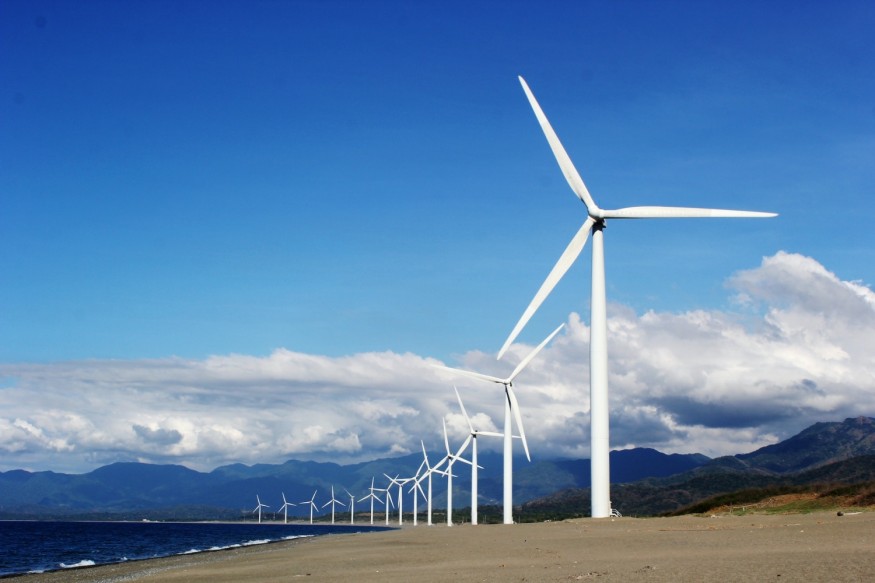
The looming shadow of resource scarcity and climate change has compelled industries, governments, and innovators to revisit the way we produce and consume energy.
In this transformative era, where traditional fossil fuels are making way for innovative energy solutions, it becomes imperative to understand the key trends that are shaping the future of our planet. This article delves into the top clean energy trends of 2024 and explores how industry pioneers like ICL Group are playing a pivotal role in this green revolution.
ICL: Pioneering the Renewable Movement
ICL Group, a formidable player in the energy industry, embraces a clear vision: to integrate energy conservation, efficiency, and expansive use of photovoltaics. A testament to this commitment is the Green Sdom project, aimed at slashing the carbon footprint by about a million tons. Fueled by an array of solar energy and varied energy storage types, this venture seeks to establish a microgrid, creating a symbiosis of clean energy production and green products.
Trends Shaping the Energy Horizon
Advanced Photovoltaics: As solar companies integrate PV systems seamlessly into our environments, land conservation continues to be a major driver. Integrated PV, floatovoltaics, and agrivoltaics are thus seen as the next evolutionary step. Innovative startups are now working with thin-film cells to introduce flexible, lightweight, and eco-friendly solar panels. Furthermore, the incorporation of advanced materials like perovskite promises to revolutionize the energy conversion process, making it more efficient and viable.
AI and Big Data Revolution: In a realm where real-time decisions can dictate success, AI and Big Data are carving out a transformative niche in the energy sector. From grid analytics to power consumption forecasting, the prowess of machine learning is reshaping how we harness renewable and clean energy. Moreover, with the integration of virtual power plants and data analytics, designing and analyzing renewable energy models have never been more sophisticated.
Microgrid Integration: In the symphony of renewable energy, microgrids act as skilled conductors, orchestrating harmonious distribution and consumption. These smaller versions of the central grid allow communities and businesses to become self-sufficient in their energy needs while fostering resilience against larger grid disruptions. Leveraging breakthroughs, energy transmission has become not only efficient but also finely tuned to local demands. As communities strive for energy independence and sustainability, microgrids are evolving, backed by real-time data analytics and adaptive control systems, ensuring a responsive and reliable power network.
Hydropower's Reliability: The consistent nature of hydro energy makes it a dependable source. Innovations in this realm are focusing on efficient energy converters and the utilization of oceanic energy. More than just harnessing energy from rivers, today's hydropower taps into the vast potential of the oceans. Innovations in energy converters and component designs aim to extract energy more efficiently from moving water sources. Notably, small-scale hydroelectric dams and tidal barrages are now decentralizing the energy generation process, while techniques like ocean thermal energy conversion (OETC) present novel ways to exploit temperature differentials.
Green Hydrogen: As the quest for zero-emission fuels intensifies, green hydrogen emerges as a beacon of hope. While traditionally derived from non-renewable sources, the tide is turning in favor of sustainable green hydrogen. Research is ongoing to enhance the storage, transportation, and distribution of this high-energy-density fuel, with a special focus on maximizing the efficiency of fuel cells. Green hydrogen generates near-zero GHG emissions.
The Winds of Change: One of humanity's allies, the wind, continues to offer renewed promise. New-age startups are pushing the boundaries with offshore and airborne wind turbines, reducing our land footprint. To complement this, advancements in blade aerodynamics and generator designs ensure that every guest is optimally harnessed. Moreover, with sustainability at the forefront, innovations like bladeless turbines and recyclable thermoplastic materials are gaining traction.
Advanced Robotics: With precision being paramount, robotics is ushering in a new era of efficiency in the renewable sector. Automated solar panels, for instance, are adapting in real-time to maximize energy conversion. On another front, drones equipped with advanced imaging technologies are ensuring faster and safer inspections, especially for large structures like wind turbines. Automated operations, drone inspections, and equipment automation in renewable energy production ensure optimal resource utilization and heightened safety.
Blockchain's Trustworthiness: At the crossroads of energy and digital transformation, blockchain promises transparency and security. By facilitating trusted transactions like peer-to-peer electricity trading, blockchain is building confidence in the decentralized energy landscape. Furthermore, by ensuring encrypted data storage and easy regulatory compliance, it's strengthening the foundation of a resilient renewable energy sector.
Broadening Horizons: A Look Ahead
Past events have underscored the need for energy independence and efficiency. ICL, with its new $400 Million Dollar LFP Manufacturing Plant, aims to be a cornerstone in the global lithium battery industry, signaling its commitment to a sustainable energy future.
The crux is evident. Sustainable energy practices are not just about conservation but wise exploitation. As the world steadily drifts towards a renewable energy future, corporations like ICL stand at the forefront, ready to usher in an era marked by innovation, sustainability, and resilience.
© 2025 NatureWorldNews.com All rights reserved. Do not reproduce without permission.





